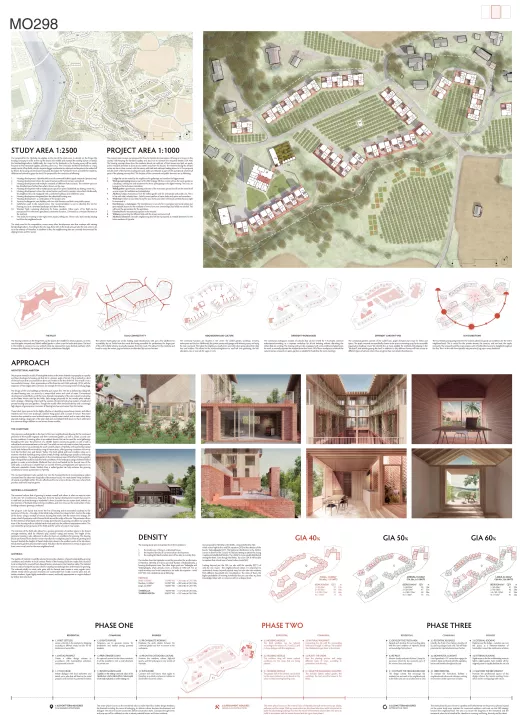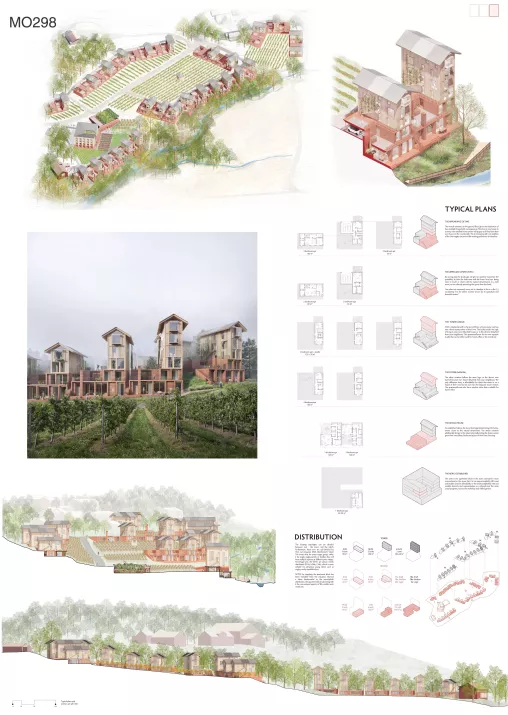Project:
Growing a community
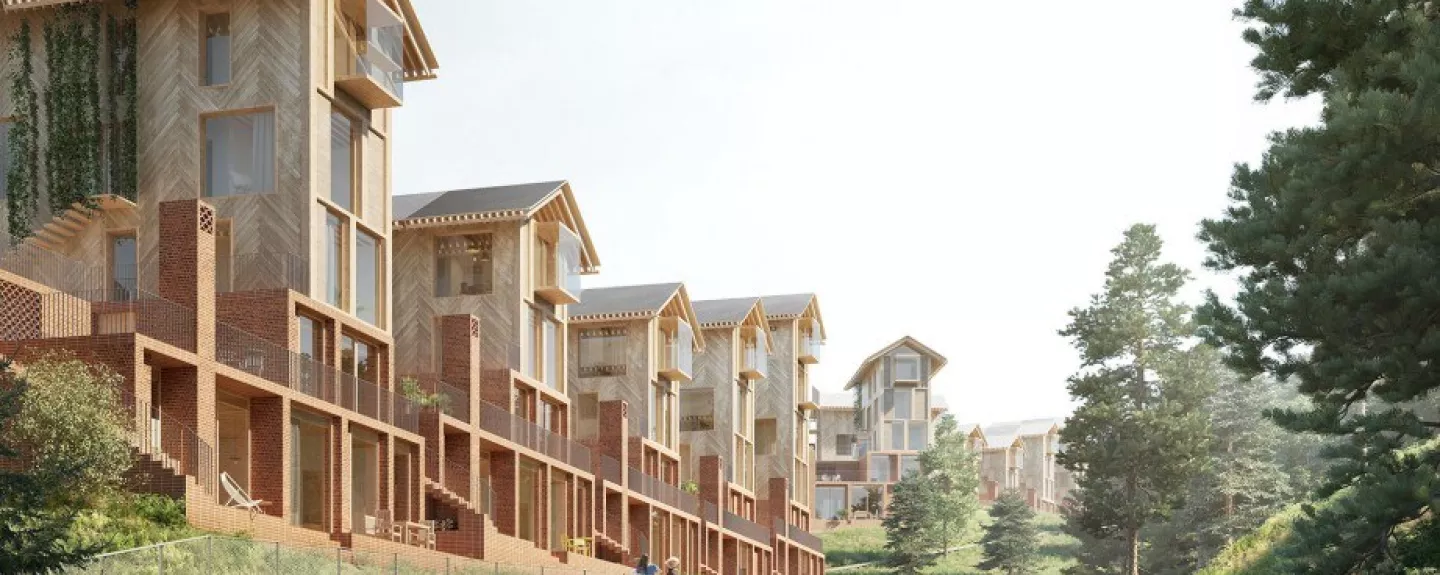
About
-
In Hjertelia, we want to develop a new form of neighborhood where agriculture, manufacturing processes and cooperative housing come together as an alternative to low-density suburban housing.
Hjertelia is perfect example of an ecotone, a transition area between two ecosystems. Located between city and countryside, it is a sharp boundary line where synergies have to be created, where the city can expand without degrading soils and agriculture can meet biodiversity.
The long delay before the arrival of the new train line gives the possibility of a staged development of the site. First, we will focus on the development of an agricultural community. Then, we will attract people through prototyping and education. Finally, sustainable and flexible housings will be implemented in a metabolic way.
-
Air Studio
Name: Tin Phan (NO)
Name: Phoebe Chu (HK)
Mail: tin@airstudio.no
Web: www.airstudio.noHaptic Architects
Name: Scott Doig (GB)
Name: Jesper Andreas Christiansen (NO)
Mail: scottdoig@hapticarchitects.com
Web: www.hapticarchitects.comAir + Haptic
The team is a joint collaboration between the offices of Air and Haptic. Air is an architecture office in Oslo and offers services of analysis and architecture as inseparable to each other. We believe the success of a building can no longer be defined purely by intuitive design means. Instead we derive upon design solutions from in depth analysis. Our evidence based approach seeks to eliminate unsound practices by shifting from tradition to firmly grounded scientific research. Haptic Architects on the other hand, is an internationally well-established architectural firm based on long and broad experience in the industry. We provide reassurance that the work is in accordance with requirements for implementation and planning.More importantly, one of our core values is to nurture and assist young professionals come forward with their talents for innovation, fresh perspectives, and design skills.Together we were able to challenge each other on multiple aspects in landing this entry: design ethos, alternative approaches, analytical capacity, societal ambition and professional rigor. -
The proposal has a clear and strong concept and is an interesting answer to the main question in the competition – to develop a new pilot neighbourhood on urban farming and social forms of living. The concept is exploring new ways of integrated living and shared space for agriculture. The housing units are placed along the perimeter of the site, and the detached houses create a shielded common productive area in the middle of the site for growing. The proposal also aims to keep a “green corridor”. By placing the buildings on the outer edge and in the steeper angle of the terrain, the best land is saved for agriculture. The structure also improves the climatic conditions for farming, and underline that the main purpose of living in Hjertelia community is the common farming. Salimi’s walled garden as a connecting point and community house is good, appealing to both the social and the agricultural aspects of the community.
The architecture also emphasises that this is one holistic community. It has a distinct expression, where the lowest part is a coherent wall of bricks in two floors. The wall is well designed for different functions and variation, and there is a good connection between outdoor and indoor activity. Light, slim wooden towers are placed on top of this plinth, and the towers are of different heights. All the living units follow this design concept. The architectural language is referencing other geographical areas than the archetypically Norwegian, and that is seen as a strength. The concept is clear, but the community may at the same time appear a bit closed and exclusive. Besides, the narrow multi-story way of building is costly. Although the concept allows some variety, there is a lack of flexibility in the bigger scale.
The development of housing units in steep terrain is interesting, and so is the variation of the unit sizes at different price ranges. The towers may though be a challenge to universal design and also make it less easy to include all age groups.
Team Interview
1. How did you form the team for the competition?
This team is a result of young architects across two offices (Air and Haptic) that has kept in touch since their time in school and during their professional life. This team was formed on the basis of many other successful competition runs, and the different core values of the offices. Air is deeply rooted in a method, of treating analysis and architecture as inseparable to each other. Haptics’ core values is to nurture and assist young professionals come forward with their talents for innovation, fresh perspectives, and design skills. Together we were able to challenge each other on multiple aspects in landing this entry: design ethos, alternative approaches, analytical capacity, societal ambition, and professional rigor.
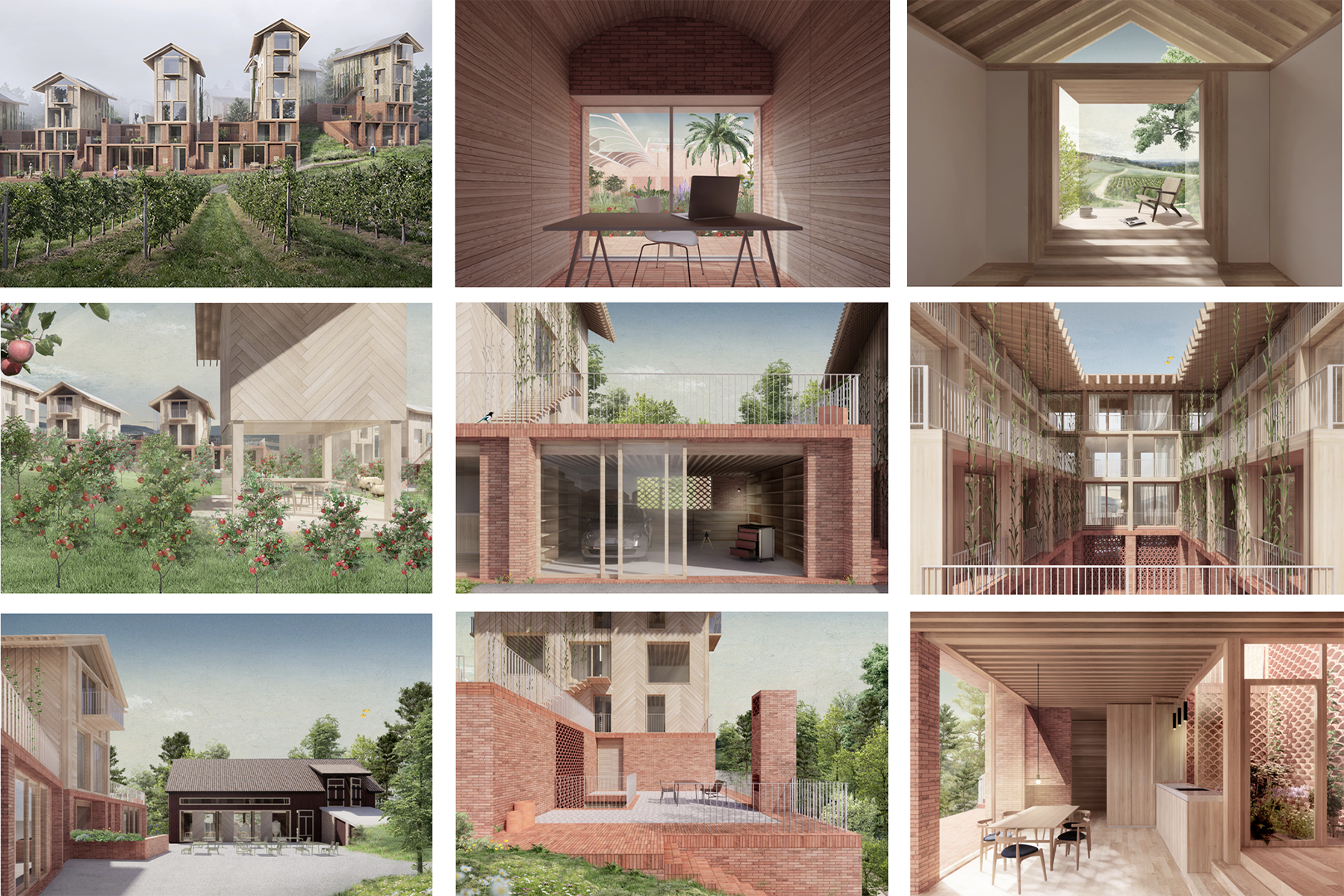
2. How do you define the main issue of your project, and how did you answer on this session main topic, Living cities?
Geographically, Hjertelia is situated on a sloping hill, surrounded by agriculture and nature. We defined the main issue as: how do you develop this site as residential, without compromising the existing context? We identified that Hjertelia was the only residential prospect to overlap with existing nature and agriculture, and rather used it as a strength than exclude it.
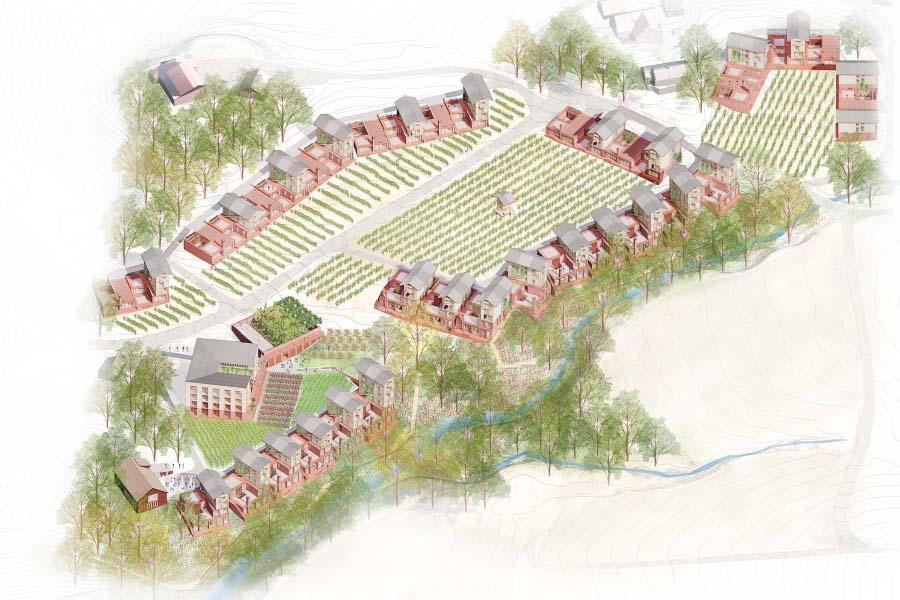
3. How did the issues on metabolic and inclusive vitalities and the questions raised by the site mutation meet?
Rather than removing these existing qualities, we incorporated the existing agriculture and nature into our design scheme as part of everyday life. The future residents could experience the nature and biology through private and public courtyards, fields, communal spaces. For instance, a special type of apple vineyards was chosen so both families of all ages could play in the field, but also allows for animals to graze the land.
4. Have you treated this issue previously? What were the reference projects that inspired yours?
We always try to include the local history, culture, agriculture, nature in whatever we propose. Our reference projects are inspired by this approach, such as the Hjertelia site being the meeting place for different ethnicities and cultures, hence the communal values of walled gardens in the middle-east. Other reference to the site being “sloped”, are the combined references of Italian villages on hilltops and the Norwegian way of dealing with steep ravines through terrace houses.
5. Urban-architectural projects like the ones in Europan can only be implemented together with the actors through a negotiated process and in time. How did you consider this issue in your project?
The actors were a key ingredient in our contribution. Not only did we read the existing documents issued by the local and regional authorities, we also interviewed landowner Strande and tenant Salimi that had lived on and farmed the land for many decades. The realism in what they could offer of services was part of our proposal.
6. Is it the first time you have been awarded a prize at Europan? How could this help you in your professional career?
Tin and Phoebe has together actually been awarded a special mention in Europan 14 (Alta, Norway). Europan is for us unique, because it provides a prolific platform that encourages you to tackle both design and societal challenges. To have a reference project like this, helps us to pursue other ambitious venues with legitimacy and proof-of-concept.
Has your team, together or separately, already conceived or implemented some projects and/or won any competition? if yes, which ones?
• Special mention in Europan 14. Alta, Norway 2017
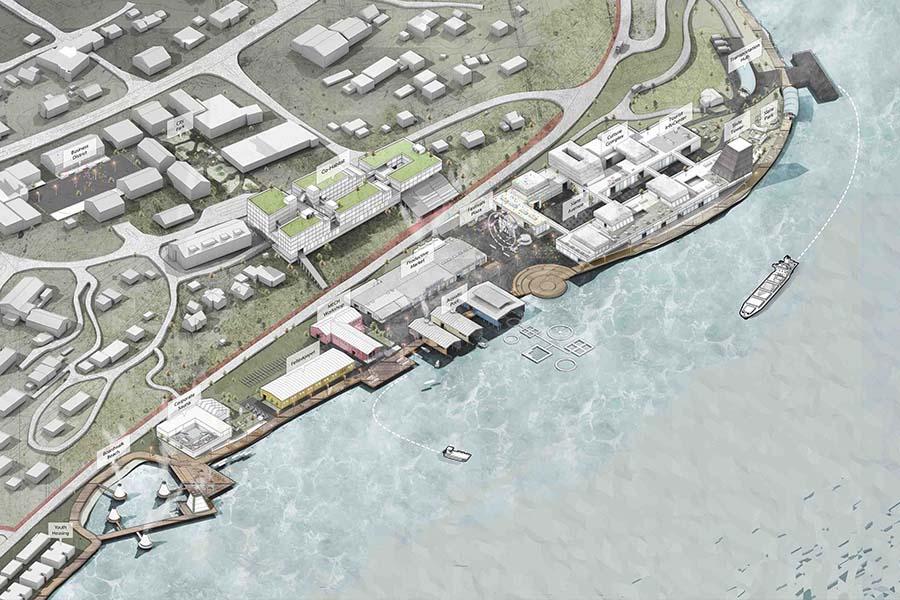
• 1st place for the Vestland County Chambers. Bergen, Norway 2019
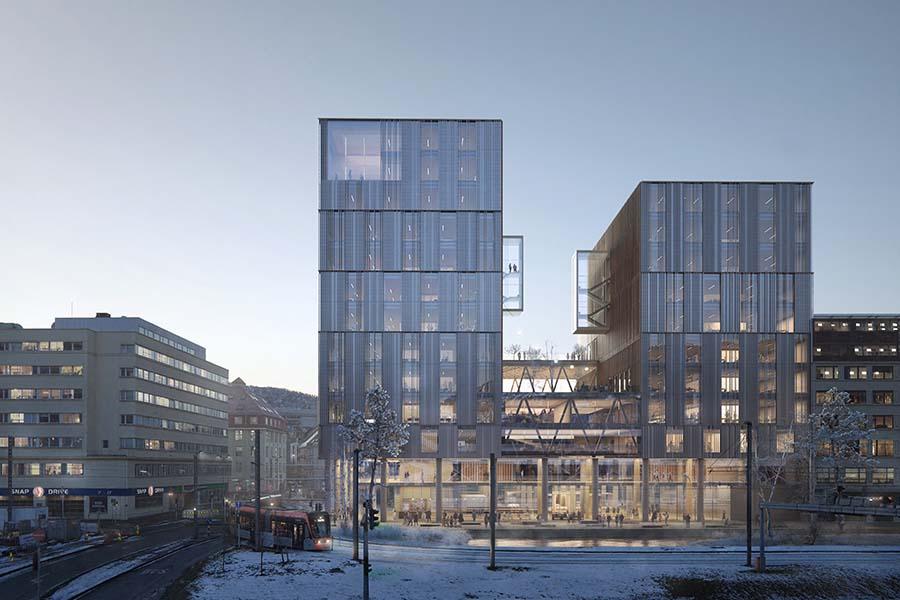
• Honorary mention for the Sara Hildén Art Museum. Tampere, Finland 2021
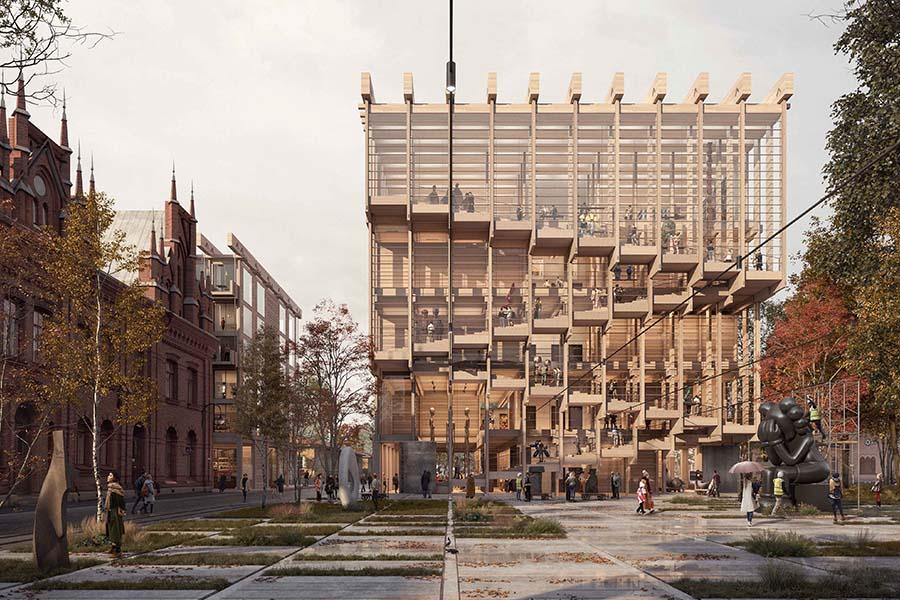
Related projects
-

Building the ecotone
In Hjertelia, we want to develop a new form of neighborhood where agriculture, manufacturing…
-

Self nurturing city
The Self-Nurturing City proposal will rely on renewable energy, and renewable and recycled…
-

Født i skogen
We want to change that and propose a rethink of the relationship between humans and animals. Our…

